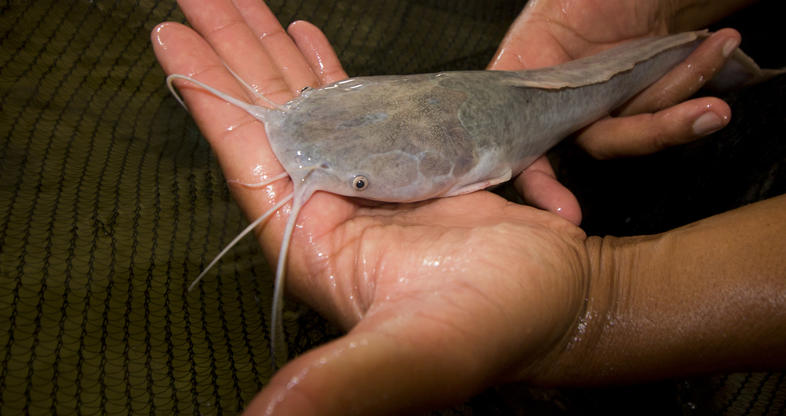Fish Farmers Community — Classified by Fish Classes:
Agnatha: Jawless fish like lampreys and hagfish.
Chondrichthyes: Cartilaginous fish like sharks, rays, skates, and chimaeras.
Osteichthyes: Bony fish, which make up the vast majority of fish species. E.g. catfish, tilapia, salmon, carp, trout, cod, mackerel, sardines, snapper, tuna, eel (some types), bass, grouper, etc.
Optimizing Growth Cycles: Strategies for Accelerating Catfish Maturity
- This topic is empty.
- AuthorPosts
- April 4, 2025 at 6:30 am #620380
 Agric4ProfitsKeymaster
Agric4ProfitsKeymaster
Catfish farming is a key component of global aquaculture, providing a sustainable source of protein to millions. One of the most important aspects of successful catfish farming is optimizing the growth cycle to accelerate fish maturity.
By improving the speed at which catfish reach maturity, farmers can maximize production, reduce costs, and meet market demand more efficiently. This article explores various strategies that can be implemented to optimize growth cycles and accelerate catfish maturity.
1. Role of High-Quality Feed in Accelerating Growth
High-quality, nutrient-rich feed is essential for accelerating the growth cycles of catfish. Proper nutrition ensures that catfish receive the required balance of proteins, fats, vitamins, and minerals to fuel rapid growth.
By enhancing feed with essential nutrients, farmers can boost feed conversion rates, meaning that catfish can grow more quickly with less feed.
Implementing specialized feeds at different growth stages, such as high-protein feeds for juvenile catfish, can significantly shorten the time required for them to reach maturity. Providing the right type of feed at the right time in the growth cycle helps maximize growth potential.
2. Optimizing Water Quality and Environmental Conditions
Water quality and environmental conditions are vital factors in optimizing the growth cycle of catfish. Maintaining optimal water temperature, oxygen levels, pH, and salinity promotes faster metabolism and accelerates growth.
Warm water temperatures (around 28-30°C) are particularly beneficial, as they encourage higher activity levels and faster feeding rates.
Regular monitoring and adjustments to water quality can help minimize stress, reduce disease outbreaks, and ensure the catfish remain in a healthy, fast-growing environment. By optimizing these conditions, farmers can ensure that catfish mature more rapidly and efficiently.
3. Utilizing Selective Breeding for Faster Growth
Genetics plays a significant role in the speed of catfish growth. Selective breeding programs focused on traits such as fast growth, disease resistance, and adaptability to various environmental conditions can greatly reduce the time it takes for catfish to reach maturity.
By selecting breeding stock that exhibits these desirable traits, farmers can accelerate the maturation process and increase overall farm productivity. Implementing genetic selection for rapid growth can lead to more consistent and faster-growing fish, ultimately shortening the growth cycle and improving profitability.
4. Enhancing Farm Management Practices
Effective farm management practices are key to optimizing the growth cycles of catfish. Proper stocking density, regular monitoring, and effective disease control can all play a role in ensuring catfish mature quickly. Overcrowding or poor management practices can lead to slower growth, stress, and disease, all of which can delay maturity.
By carefully managing the farm environment, including optimizing water circulation and aeration, farmers can create an ideal setting for faster growth.
Consistent feeding schedules and ensuring fish have access to clean, well-oxygenated water can also promote better growth rates and reduce the time required for catfish to reach maturity.
5. Incorporating Technology and Automation
Advancements in technology and automation offer new opportunities for accelerating catfish maturity. Modern systems, such as automated feeding systems, water quality monitoring devices, and growth tracking software, allow farmers to closely monitor and control the conditions in which their catfish are growing.
These technologies help optimize feed distribution, reduce waste, and ensure that catfish are provided with the ideal environment for rapid growth.
Real-time data and automated systems also allow for quick responses to any issues that might arise, preventing slow growth and ensuring that catfish reach maturity more quickly.
Optimizing growth cycles and accelerating catfish maturity is critical for improving the efficiency and profitability of catfish farming.
By focusing on high-quality feed, maintaining optimal water conditions, implementing selective breeding, enhancing farm management practices, and utilizing modern technologies, farmers can significantly reduce the time required for catfish to reach maturity.
These strategies not only promote faster growth but also contribute to a more sustainable and productive aquaculture industry. As the global demand for catfish continues to grow, optimizing growth cycles will remain an essential strategy for meeting market needs efficiently and sustainably.
Read Also: Optimizing Catfish Growth Through Enhanced Feed Supplements
- AuthorPosts
- You must be logged in to reply to this topic.

